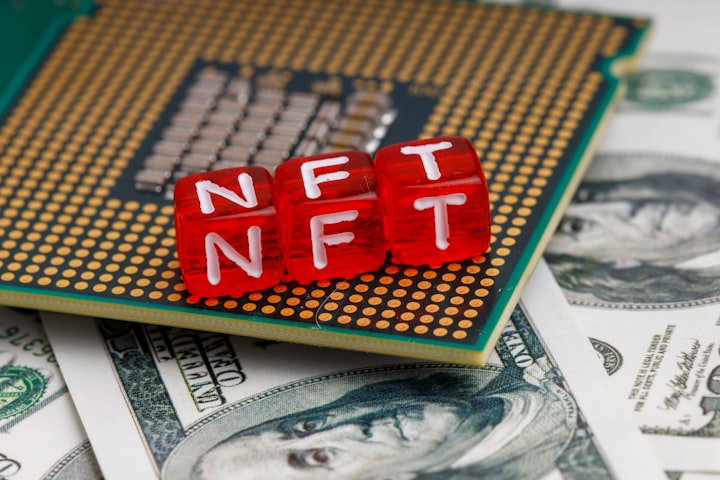
Decentralized Finance, also known as DeFi, is a rapidly growing movement that aims to revolutionize the traditional financial system by leveraging blockchain technology to provide more open, transparent, and accessible financial services. Unlike traditional finance, which is largely centralized and controlled by a few large institutions, DeFi is built on decentralized networks that allow anyone with an internet connection to participate in a wide range of financial activities, such as lending, borrowing, trading, and investing, without the need for intermediaries or middlemen. In this review, we will explore the key concepts, applications, and implications of DeFi, and discuss why it is emerging as one of the most promising and disruptive trends in the world of finance.
Key Concepts of Decentralized Finance:
Decentralized finance is built on a number of key concepts that distinguish it from traditional finance. One of the most important concepts is decentralization, which refers to the absence of central authorities or intermediaries that control financial activities. In DeFi, financial transactions are conducted directly between users on a peer-to-peer basis, without the need for intermediaries such as banks, brokers, or clearinghouses. This not only reduces costs and eliminates inefficiencies but also provides greater transparency and security, as transactions are recorded on a public blockchain that can be verified by anyone.
Another key concept of DeFi is programmability, which refers to the ability to write and execute smart contracts on blockchain networks. Smart contracts are self-executing computer programs that can automate a wide range of financial activities, from lending and borrowing to trading and investing. They allow users to create and customize financial products and services that are tailored to their specific needs, without the need for intermediaries or third-party providers.
Applications of Decentralized Finance:
Decentralized finance has a wide range of applications that are disrupting traditional financial services and creating new opportunities for users. One of the most popular applications of DeFi is lending and borrowing, which allows users to borrow or lend digital assets such as cryptocurrencies without the need for a centralized intermediary. This is made possible through protocols such as Compound, Aave, and MakerDAO, which use smart contracts to automate the lending and borrowing process and provide users with a wide range of options for collateral, interest rates, and repayment terms.
Another popular application of DeFi is trading, which allows users to buy and sell digital assets on decentralized exchanges such as Uniswap, SushiSwap, and Balancer. Decentralized exchanges operate without a central order book or matching engine, and instead use automated market-making algorithms to determine prices and execute trades. This allows users to trade directly with each other without the need for intermediaries or market makers, and also provides greater liquidity and transparency than traditional exchanges.
Investing is also a popular application of DeFi, with platforms such as Yearn Finance and Curve allowing users to invest in a wide range of digital assets and earn yields through automated strategies and protocols. This provides users with greater control over their investments and allows them to participate in a wider range of markets and assets than traditional investment products.
Implications of Decentralized Finance:
Decentralized finance has a number of implications for the traditional financial system and for society as a whole. One of the most important implications is that it is creating new opportunities for financial inclusion and empowerment, particularly for people who are excluded or underserved by traditional financial services. DeFi is making it possible for anyone with an internet connection to access a wide range of financial products and services, regardless of their location, background, or financial status.
Another important implication of DeFi is that it is disrupting traditional intermediaries and creating new business models and revenue streams. DeFi protocols and platforms are challenging the dominance of banks, brokers, and other intermediaries, and providing users with more efficient, transparent, and cost-effective financial services. This is creating new opportunities for startups and entrepreneurs to develop innovative solutions that can compete with or complement traditional financial services.
However, the growth of DeFi also presents a number of challenges and risks that need to be addressed. One of the main challenges is scalability, as the current generation of DeFi protocols and platforms are still limited in their capacity and performance. This can result in slow transaction processing times, high fees, and limited functionality, which can hamper the growth and adoption of DeFi.
Another challenge is security, as DeFi platforms are vulnerable to a wide range of attacks and hacks that can result in loss of funds and other damages. This is because DeFi platforms are still largely unregulated and rely on decentralized networks that are susceptible to various forms of exploitation and manipulation.
Conclusion:
Decentralized finance is emerging as one of the most promising and disruptive trends in the world of finance, offering a range of new opportunities and possibilities for users and entrepreneurs. By leveraging blockchain technology and decentralization, DeFi is challenging the dominance of traditional financial intermediaries and creating new business models and revenue streams.
However, the growth of DeFi also presents a number of challenges and risks that need to be addressed, such as scalability and security. As DeFi continues to evolve and mature, it will be important for regulators, users, and developers to work together to ensure that it can fulfill its potential and create a more open, transparent, and inclusive financial system for all.
About the Creator
Aron38
short story lover






Comments
There are no comments for this story
Be the first to respond and start the conversation.